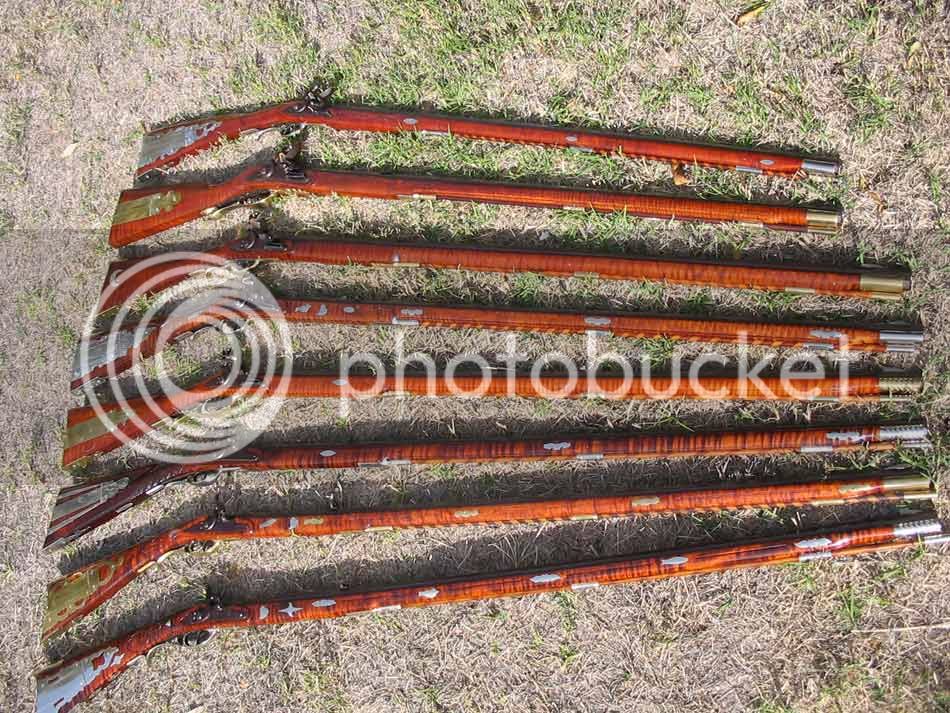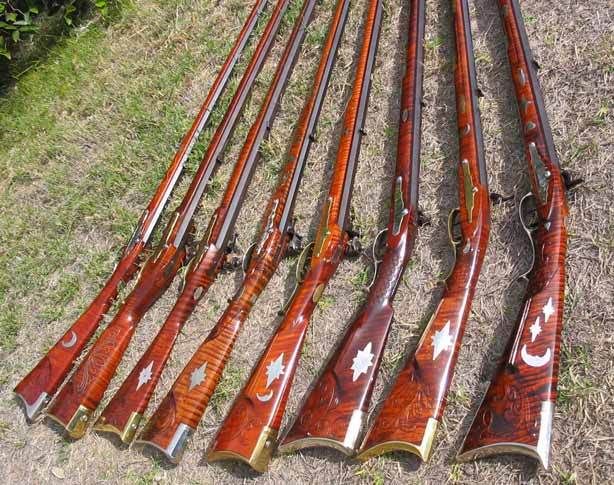Henry Bowman
32 Cal.
- Joined
- Jan 10, 2017
- Messages
- 20
- Reaction score
- 0
So, I have long wanted to build a Kentucky rifle. I'm pretty certain that many of my forefathers in Kentucky, Virginia, Pennsylvania, and Ohio carried them during the 1700s and early 1800s. I hunt with a modern muzzleloader but, I hope to someday have a Kentucky rifle that I've built.
I would like any advice on how to get started. I don't really want to buy a kit. I attended a show in Lexington, KY a few years ago where hundreds of vendors had locks, stocks, barrels, etc. I think that's the route I want to take but any advice would be great.
I understand the total length of the Kentucky rifle should not exceed the height of the shooter's chin. Well, I am 6'5" and I'd like a very long Kentucky rifle. Any guidance?
I love curly maple. Any pointers?
I'm not sure how much carving and adornment I want, probably just a touch. What would have been used in Kentucky in, say, the early 1790s (when my family came to KY)? or Pennsylvania and Ohio in 1803 (when my family made the trip when Ohio became a state)?
How do I ensure that I have a good match of lock and barrel?
Can I get an XLT-sized barrel and stock? What are the ballistic implications of the extended barrel?
What is the best approach to making a matching pistol?
I plan to research for awhile before I build. This might take some time because I want to get it right the first time and have a treasure to pass along for generations.
Any help, guidance, or whatever will be appreciated.
Thank you.
I would like any advice on how to get started. I don't really want to buy a kit. I attended a show in Lexington, KY a few years ago where hundreds of vendors had locks, stocks, barrels, etc. I think that's the route I want to take but any advice would be great.
I understand the total length of the Kentucky rifle should not exceed the height of the shooter's chin. Well, I am 6'5" and I'd like a very long Kentucky rifle. Any guidance?
I love curly maple. Any pointers?
I'm not sure how much carving and adornment I want, probably just a touch. What would have been used in Kentucky in, say, the early 1790s (when my family came to KY)? or Pennsylvania and Ohio in 1803 (when my family made the trip when Ohio became a state)?
How do I ensure that I have a good match of lock and barrel?
Can I get an XLT-sized barrel and stock? What are the ballistic implications of the extended barrel?
What is the best approach to making a matching pistol?
I plan to research for awhile before I build. This might take some time because I want to get it right the first time and have a treasure to pass along for generations.
Any help, guidance, or whatever will be appreciated.
Thank you.






